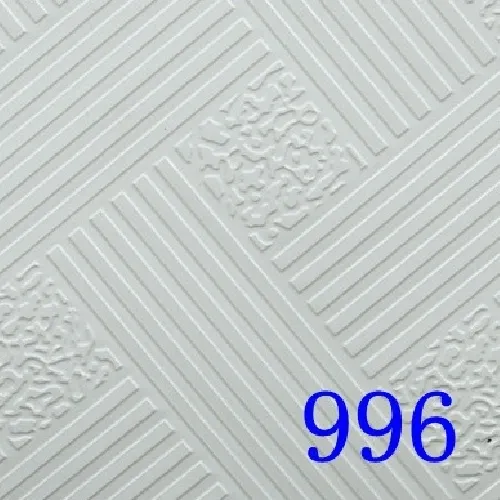- Afrikaans
- Albanian
- Amharic
- Arabic
- Armenian
- Azerbaijani
- Basque
- Belarusian
- Bengali
- Bosnian
- Bulgarian
- Catalan
- Cebuano
- Corsican
- Croatian
- Czech
- Danish
- Dutch
- English
- Esperanto
- Estonian
- French
- German
- Greek
- Hindi
- Indonesian
- irish
- Italian
- Japanese
- Korean
- Lao
- Malay
- Myanmar
- Norwegian
- Norwegian
- Polish
- Portuguese
- Romanian
- Russian
- Serbian
- Spanish
- Swedish
- Thai
- Turkish
- Ukrainian
- Uzbek
- Vietnamese
pro . 29, 2024 11:18 Back to list
Exploring the Features and Benefits of Ceiling T Bars in Construction
The Ceiling T Bar An Essential Element in Modern Interior Design
When it comes to modern interior design, the importance of structural elements often goes unnoticed. One such element is the ceiling T bar, an essential component of suspended ceiling systems commonly used in commercial buildings, offices, and even residential spaces. These lightweight, metal grid systems have revolutionized how we approach ceiling design, offering not just aesthetic benefits but practical solutions as well.
What is a Ceiling T Bar?
The ceiling T bar, often referred to as a T-bar grid or T-grid, is part of a framework that supports ceiling tiles and panels. Typically made from galvanized steel or aluminum, T bars are designed in a T-shape that allows them to interlock seamlessly, creating a grid pattern across the ceiling. This grid not only supports the weight of ceiling panels but also facilitates the installation of lighting, HVAC systems, and other utilities, making it an integral feature of modern spaces.
Benefits of Using Ceiling T Bars
1. Aesthetic Flexibility One of the most significant advantages of ceiling T bars is their versatility in design. They can accommodate a variety of ceiling tile materials, including acoustic panels, decorative tiles, and lightweight gypsum boards. This flexibility allows architects and designers to create visually compelling spaces, catering to various themes, from contemporary to industrial aesthetics.
2. Acoustic Performance In many commercial environments, sound management is a crucial factor. Ceiling T bars can be paired with acoustic ceiling tiles to absorb sound and reduce noise levels in busy offices or public areas. This not only enhances the comfort of a space but also contributes to improved productivity among occupants.
ceiling t bar

3. Ease of Installation and Maintenance The modular nature of T bar ceilings means they can be installed quickly and easily. If a ceiling tile becomes damaged or stained, it can be replaced without the need for extensive repair work. This feature is particularly advantageous for businesses looking to maintain a polished appearance with minimal downtime and expense.
4. Access to Infrastructure Above a suspended ceiling lies a world of electrical wiring, plumbing, and ductwork. Ceiling T bars provide easy access to this infrastructure, allowing maintenance personnel to reach these utilities without significant disruption to the occupied space. This aspect is especially beneficial in settings such as schools and hospitals, where continuous operations are critical.
5. Energy Efficiency Modern T bar ceilings can be designed to enhance energy efficiency. By using insulation materials and strategically placing lighting within the T bar grid, spaces can benefit from reduced energy consumption. This not only lowers utility costs but also supports sustainability initiatives, a growing concern in today’s world.
Decorative Opportunities
Beyond their functional benefits, T bar ceiling systems offer numerous decorative possibilities. Designers often use color, materials, and patterns of ceiling tiles to create unique visual effects. For instance, combining different tile textures and colors within the grid can add depth and interest to the ceiling, transforming it from a mere overhead fixture to a focal point of the room.
Conclusion
In conclusion, the ceiling T bar is a vital component of contemporary interior design that merges functionality with aesthetics. Its versatile applications, ease of installation, and maintenance make it an attractive solution for various environments. As architects and designers continue to push the boundaries of creativity, T bar ceilings will undoubtedly remain at the forefront, enhancing our living and working spaces while contributing to a functional and beautiful built environment. Embracing this structural marvel not only enriches design possibilities but also fosters spaces that better serve our collective needs.
-
Transform Interiors with PVC Gypsum Ceiling: A Stylish, Durable, and Moisture-Resistant SolutionNewsMay.19,2025
-
The Smart Interior Upgrade: Discover the Durability and Versatility of Gypsum Ceiling Access Panel SolutionsNewsMay.19,2025
-
The Smart Choice for Interior Design: Discover the Value of PVC Gypsum Ceiling SolutionsNewsMay.19,2025
-
Mineral Fiber Ceiling Tiles: The Smart Blend of Performance and AestheticsNewsMay.19,2025
-
Mineral Fiber Ceiling Tiles: The Superior Choice Over Gypsum for Sound and Fire SafetyNewsMay.19,2025
-
Mineral Fiber Ceiling Tiles: Eco-Friendly Strength and Style for Every CeilingNewsMay.19,2025







